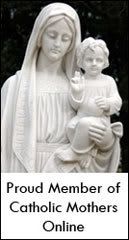Except for the expected translation differences, which are relatively minor and insignificant, there is essentially no difference between the Catholic and Protestant versions of the Ten Commandments. Every Bible presents the Ten Commandments in two places -- Exodus 20:2-17 and Deuteronomy 5:6-21. What most people perceive as a difference comes from how the Protestants and Catholics number the commandments. How did this disparity in numbering come about?
First, we need to examine how the Bible itself came to be in the form we see it today. When the Scriptures were first committed to writing there were no chapters and verses. If you look at the oldest texts we have, even paragraphs and spacing between words don't exist, making them very difficult to read. The division of the Bible into a readable structure using chapters and verses, punctuation, and upper and lower case lettering came about much later, from the ninth to the sixteenth centuries. Richard Murphy writes in his book, Background to the Bible:
"It was not until 1226 that Stephen Langton, a professor at the University of Paris and later archbishop of Canterbury, divided the text of the Bible into chapters." (p. 28)
A little further on, he continues:
"Another notable textual improvement occurred in the year 1551 when the famous printer, Robert Stephen...introduced into the Bible the numbering of verses worked out in 1528 by Santes Pagnini." (p.28)
So, what does this mean regarding the Ten Commandments? Simply this, that the actual division or numbering of the commandments is a later, artificial device that helps us locate them more easily in the Bible, and gives us a tool to help us remember them. The original texts never assigned numbers to the individual commandments, so any numbering in terms of Scripture itself is ambiguous.
The full text of the commandments in Exodus and Deuteronomy -- and, incidentally, there are small but significant differences in wording between the two versions, as we shall soon see -- is unaffected by the artificial numbering. So, whether one is Catholic or Protestant, the Ten Commandments are the same. The abbreviated version often presented as the "Catholic Version" is nothing more than a shorter form not so much intended to convey the full Scripture text, but which rather captures the essence of the commandments in a simple, easy to remember form. In fact, in his comprehensive Dictionary of the Bible, John McKenzie writes:
"Most interpreters believe that all the commandments were originally as brief as the commandments of murder, adultery, theft, and false witness. The others have been expanded by the addition of homiletic motives for their observance." (p. 186)
Where Protestants and Catholics differ is in the identification of portions of the text as belonging to one commandment or another -- in particular, the first two and the last two commandments. In the Catholic interpretation, Exodus 20:4-6 and Deuteronomy 5:8-10, which admonish against the making of and worshipping of idols, are an amplification of the two previous verses banning false gods, not a separate commandment. The idea of having a god in the cultural atmosphere of the day would naturally have included the practice of adoring graven images. Thus, simple logic would say that the two admonitions -- against false gods and not adoring graven images -- are really, part and parcel, the same commandment.
The commandment against covetousness shows a very powerful insight that seems to have developed between the time Exodus 20:17 was written and when Deuteronomy 5:21 was penned. In Exodus, the wife is considered to be the husband's property, not even important enough to be considered first. In Deuteronomy, written later, the wife is listed first, and a man's property becomes a separate list, connected only conjunctively to the wife. The Catholic enumeration of the commandments sees in this an important message: A wife is not property. She is a person equal to her husband, made as he is in the image and likeness of God. This is a clear distinction justified by Genesis 1:27, "So God created man in His image, in the image of God He created him, male and female He created them."
It is further supported by the passage in which God seeks a suitable partner for the man He created (see Genesis 2:18-23). The man names all the other creatures, but does not name the woman. He cannot, because to name something is to have dominion over it. Because they are created equal, because they are created in God's image and likeness, neither man nor woman can have dominion over the other. For this reason, that it preserves the dignity of the woman as a human being equal to man, rather than seeing woman as chattel, Catholics see two commandments where Protestants see but one.
Thus, the Catholic enumeration of the Ten Commandments does, indeed measure up to Scripture.
____________________________
(HandyGramps, August 21, 2001)






0 comments:
Post a Comment